Netherlandish Great Artist Van Gogh - A Year in the Life 1888
Posted by
Art Of Legend India [dot] Com
On
11:38 PM
While
Van Gogh was furnishing his Yellow House in Arles, France was shaken by
political strife. In Paris, the ex-War Minister General Boulanger was wounded
in a duel with Prime Minister Flocquet, while Kaiser Wilhelm of Germany made
ominous threats of war. In Britain, Jack the Ripper stalked the streets of
London and heavy snow fell in mid-summer.
An
American astrologer predicted that this year would see the world's last days,
with the sun turning to blood and one universal carnage of death'. It started badly:
in January and February, deep snow and ferocious frosts brought most of Europe
to a standstill. The French astronomer Camille Flammarion, a recognized
authority on the end of the world, warned that the cold spell defied normal
explanation. In Birmingham, word went round that the Day of Judgement had
arrived. And in London, Edward Maitland wrote that the world had ended and
another was being born.
This
was right in one sense. The comforting edifice of nineteenth-century science
had begun to crumble. Michelson and Morley, experimenting in Berlin on the
speed of light, were destroying the idea of a fixed universe and paving the way
for Einstein's theory of relativity. In Vienna Ernst Mach, whose excellent work
on the speed of sound would give a new word to the language, insisted that it
was no longer possible to believe in absolute space or absolute time.
Men of
imagination, artists and writers, stepped into the breach, claiming their
insights were more valuable than those of the scientists. Fiction, declared
Robert Louis Stevenson, was closer to truth than 'the dazzle and confusion of
reality'. The German philosopher Friedrich Nietzsche summed the matter up more
pithily: 'The old God has abdicated, and from now on I shall rule the world.
Like
Van Gogh, Nietzsche felt threatened by approaching insanity. Yet there was much
to suggest the world around them was at least as mad as they were. When Van
Gogh arrived in Arles early in 1888 he found a city torn by violence and by
wild racial hatreds. Italian workmen were attacked by angry crowds and
half-strangled before local contractors were finally persuaded to stop
employing them. Throughout France, people became impatient with their dull
Republican government, and looked for something less rational, more flamboyant.
General Boulanger, until recently Minister for War, seemed ready to take over.
On 15
March, the day after the troubles in Arles had come to a head, Boulanger was
stripped of his army commission. For-bidden to go to Paris because of his
suspected intrigues against the Republic, he had dared to go there in disguise,
'wearing dark spectacles and affecting lameness'. The attempt to disgrace him
only made him more popular and he was elected to the Chamber of Deputies by two
separate constituencies for one of 'which he had not even been a candidate.
Boulanger
then tried to sweep away the Republic by getting the Chamber to dissolve itself
and challenged the Prime Minister, Charles Floquet, to a duel. When the duel
was fought Boulanger 'with blind impetuosity spitted himself on Monsieur
Floquet's sword', receiving a severe wound in the throat, while Floquet
sustained only minor injuries. Three days later a group of shocked and
peaceable deputies tried to get duelling banned, but were overwhelmingly
defeated. Boulanger's popularity continued to grow.
Colourful
swashbucklers, however impetuous, were more to French taste than the
frock-coated politicians of the Republic. This was partly because the Republic
no longer seemed respect-able. A deputy called Daniel Wilson, who had married
the President's daughter, had used his position to further his own interest as
a newspaper proprietor. There were other scandals in the offing, as politicians
became more and more enmeshed in the shady dealings of the company which had
been formed to build the Panama Canal.
Paris
was hit by a wave of strikes, as well as other forms of violence: anarchists
and communists waged an open gun battle in Pere la Chaise cemetery and an
artist, Eugene Dupuis, was killed by another artist in a duel about their
paintings. The bloodletting fell a long way short of the universal carnage
fore-cast by astrologers, but continued the collapse of the solid values of the
Republic.
One man
who did talk about carnage was the new German Emperor, Wilhelm II, who came to
the throne in June. Within a week of his accession he had two French newspaper
correspondents thrown out of Berlin, and embarked on a series of official
visits to countries that might be Germany's allies in any future war with
France.
In
August, the Kaiser made an uncompromising speech, saying that if France tried
to recover the German provinces of Alsace and Lorraine, more than 40 million
Germans would rather 'be left dead on the battlefield than see one stone taken
from them'. A few weeks later the imperial coat of arms above the German
consulate in Le Havre was torn down. The French government made hasty
apologies, but the Boulangists exulted.
Meanwhile,
Britain stood aloof. She refused to take sides, even when Germany challenged her
naval supremacy by laying down 28 new battleships. Instead she turned to such
dull matters as the establishment of County Councils and floating a new issue
of government stock.
Britain's
own favourite prophet, the mediaeval wise woman known as Mother Shipton, had
said the world would come to an end when summer turned into winter; this
happened in 1888, with snow in June and July, but the British remained
un-perturbed. Yet they did see their own brand of sadistic violence, with Jack
the Ripper's murders in the East End of London.
As the
tension mounted, and Boulanger won election after election in an atmosphere
charged with anti-German delirium, his advent to power seemed inevitable. But
January 1889 saw a farcical anti-climax. Cheering crowds in Paris tried to
install him in the Presidential Palace, but Boulanger refused to budge. His
opportunity passed and the French Republic was saved, along with the peace of
Europe. The end of the old world, the predicted 'universal carnage of death',
was put off for 25 years, until the terrible days of August 1914.
Writer
– Marshall Cavendish
Subscribe to:
Post Comments (Atom)


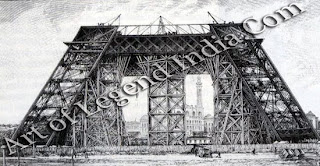
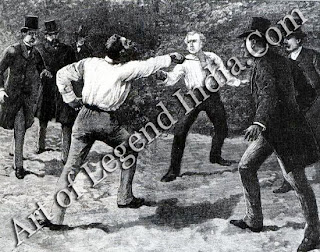

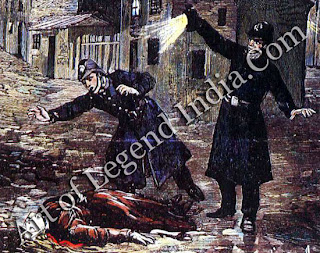
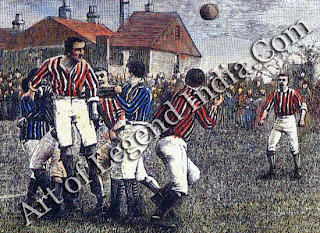
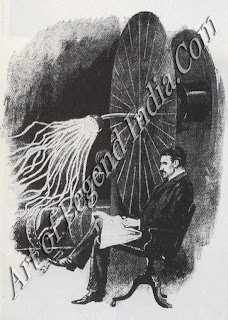










0 Response to "Netherlandish Great Artist Van Gogh - A Year in the Life 1888"
Post a Comment